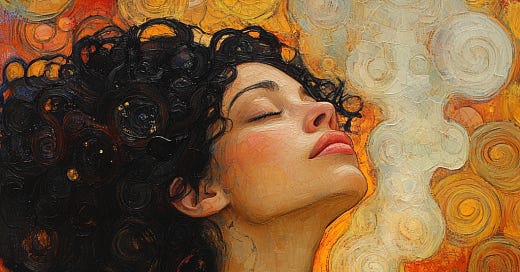I remember the first time I realized that the medieval text I was reading, which described men as hot and women as cold, was similar to Chinese medicine’s yin and yang—hot and cold, masculine and feminine—and the stupefaction that came over me, as the implications of this similarity became clear to me.
For thousands of years, Europeans practiced the same type of medicine as the Chinese. They had similar beliefs about what the body is, how it works, and how it fits into the world around it.
Yet today, when we look at traditional medicine from Europe, we think how embarrassing, all the leeches and bat wings and superstition. All the obviously “wrong” anatomies. All the sexist beliefs.
We have reduced it entirely to a historical curiosity.
I have spent the past few years going back to that medicine and looking at it from a very different point of view, the point of view of a character in my novel—someone who took the medicine seriously and had a strong faith in the worldview that goes with it.
And the more I do that, the more similarities I find, not just to Traditional Chinese Medicine but to Ayurveda, Unani Medicine, Traditional Medicines of the Americas, Polynesian Medicine, and modern-day energy practices like Reiki, among many others.
Let’s look at the breath
All these systems have a lot in common, but what interests me the most is that they all believe in a vital energy that exists everywhere, all at once. It is the animating principle of life.
It is inside our bodies, but it is also in the air around us.
The Greeks called it pneuma (meaning ‘breath’) but I prefer the Latin term, spiritus. The Chinese call it chi, in Ayurveda, it’s prana, in Unani medicine it’s rouh, which all mean breath. Polynesian belief systems call it mana, which originally referred to the wind.
It is always considered a subtle matter, not detectable through instruments per se, but through its signs and effects.
It is also a type of energy—both of a higher, spiritual nature as well as a physical, practical one—although traditional medical systems don’t necessarily make this distinction.
European medicine was heavily influenced by Galen, who leaned into the ideas of Aristotle, Plato, and Hippocrates, and asserted that spiritus came into the body through the breath.
The other thing a lot of these systems have in common is the view that breathing is one of the first ways to balance one’s vital energy. In Traditional Chinese Medicine, Qigong teaches breathing techniques to restore the flow of chi. Ayurvedic pranayama practices do as well.
Obviously, the concept of spiritus is entirely absent from modern, Westernized medicine, unless you count an informal recognition of ‘psychosomatic’ illness as having some sort of unseen effect on the body.
The European spiritus
In the medieval period in Europe, breath was critical for understanding a very big part of one’s health: the emotions.
Because breathing was so closely associated with vital energy, the quality of one’s breath was symptomatic and diagnostic of emotional states. In grief or fear, the breath would “withdraw” into the body, and joyfulness or anger could have the opposite effect, expanding it outward.
The breath was believed to be drawn into the heart, and in fact the heart itself was seen as “breathing” with a constant flow of spiritus.
Restoring health, then, was a matter of equalizing the breath.
But what is spiritus?
Scholars talk quite a bit around the subject, and they tend to stick to facts. But what is this thing that is both substance and energy, the very cause of life itself?
In the medieval period, the body was considered a part of everything around it, and vice versa.
Wind, or air, which was present in all places, was a force that connected all things—so, naturally, it was found inside the body as well.
Today we call it oxygen.
But spiritus was so much more. It was responsible for consciousness, cognition, imagination, creativity, emotion, and all bodily functions. It was a power we could call on and voluntarily strengthen. It was always available to us.
Today, I would call this Source Energy, and by extension, love.
This is not so far from the medieval belief that a sacred, creator energy existed in all things and was responsible for life, growth, and evolution.
In the Middle Ages, philosophers spent quite a bit of time peeling spiritus away from religious notions of the soul. For physicians, it was a medical reality.
I would argue that this separation of the spiritual and the physical was responsible for the development of modern, Western medicine—and science in general. And that this is where Europe went off-track. And brilliantly so.
And yet, as humans, we are not merely material form. We are mysteries of consciousness and spirit. In fact, I believe that this energetic, invisible spirit-substance makes up the majority of what we are.
Because of this, I think it is time for Western medicine to revisit its notions of spiritus and fold them back into our understanding of our bodies and beings.






